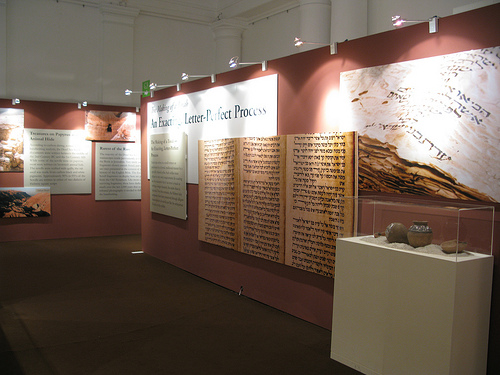Much of this post interacts with the fine work by Stephen Chapman in The Law and the Prophets: A Study in Old Testament Canon Formation (FAT 27; Tübingen: Mohr Siebeck, 2000). In one of his chapters, he asks the question(s): Is there a distinction between ‘canon’ and ‘scripture’? If so, what is the difference? If they are synonymous, how does one explain the nature of scripture or how the canon functions for us now?
Philip Davies, for example, sees “scripture” as an object with a function defined only by the community using it. Here is a quote: “‘Scripture’ can only exist as a notion only (sic) where there has evolved a religious system which permits ‘scripture’ to have a function” (in In Search of ‘Ancient Israel’, JSOTSup. 148; Sheffield: Sheffield University Press, 1992, p. 145). In this case, ‘scripture’ represents a series of religious writings and the community that is reading them bestows upon them a stamp of validation. This argument reveals how definitions of canon and scripture are indebted to discussions of authority.
Interestingly, the concept of scripture has usually been reserved for systematic/historical theology. Studies in authority naturally move into issues of inspiration and illumination (both systematic-theological categories). Few consider that the nuances of scripture change when compared to the notion of canon. How does “scripture” relate to “canon” if we have this framework of authority in mind? Are they two different entities, one a God-given authority (i.e. “scripture”) and the other a decision (i.e. “canon”) made by the Church? Or, conversely, are the notions of “scripture” and “canon” one in the same thing, as noted earlier?
Opposite Davies’ position, Iain Provan argues that “scripture,” by implication, has some degree of limitation (in “Canons to the Left of Him: Brevard Childs, His Critics, and the Future of Old Testament Theology; SJTh 50 [1997]: 1-38, esp. 10). “Canon” is, in a complex way, intimately related to “scripture.”
Stephen Chapman rightly suggests that understanding the tension between “canon” and “scripture” means understanding the “interpretive value” of these concepts in reference to Ancient Israel (87). How would these ancient communities have thought of “canon” or “scripture”? It seems anachronistic to impose something like “canon” (a closed list of books) on Ancient Israel, especially if books were still “migrating” between corpuses (like Daniel between the Prophets and the Writings). Equally extreme is to believe that “scripture” has no relationship with the constraining aspect of “canon,” as if to think “scripture” meant a free-flowing stream of religious books that moved (and continue to move) in and out of authoritative status depending on the whim of the community.
Some divide these ideas up into “canon 1” (authoritative scriptures) and “canon 2” (fixed and delimited). Instead of claiming a false dichotomy, Chapman sums up a possible solution: “‘Canon’ in this sense refers to that aspect of the process of transmission which involved the selection and ordering of a collection of Israel’s scriptures in order to construct a range of enduring witnesses. ‘Life’ emerges from the multiplicity of voices contained within the canon, for only in the chorus of these voices are we able to learn to hear a voice other than our own” (109). With this dynamic in mind, we can see parallel lines of canonical effect, separate and inseparable at the same time. Limitation is an implicit characteristic of scripture. Secondly, a pivot point existed in the history of compilation, as Chapman and Seitz have argued, where texts such as the Ketuvim (the Writings-section of the Hebrew Bible), pseudapigrapha and other interim writings viewed “the Law and the Prophets” as a fixed collection referred to in citation or allusion.
So to answer the question in the title: it is complicated. The two extremes in the “canon”-and-“scripture” debate are not wise paths to take. Therefore, the work must be done on different terms, namely, evaluating the complexity of the problem responsibly.

